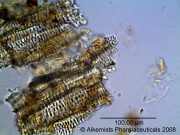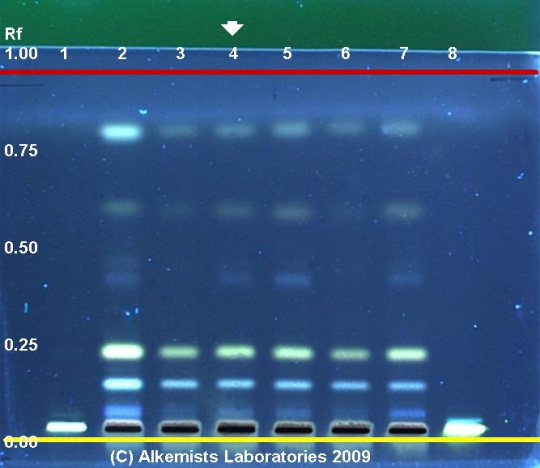Cichorium intybus (root)
(Sources added) |
|||
| Line 15: | Line 15: | ||
=Botanical Voucher Specimen= | =Botanical Voucher Specimen= | ||
=Organoleptic Characteristics= | =Organoleptic Characteristics= | ||
| − | |||
| − | |||
{{Macroscopy | source=United States Dispensatory (1918) | {{Macroscopy | source=United States Dispensatory (1918) | ||
| − | | description= | + | | description=The whole plant has a bitter taste, without acrimony or any very peculiar flavor. The |
| − | whole plant has a bitter taste, without acrimony or any very peculiar flavor.The | + | |
taste is strongest in the root and weakest in the flowers.}} | taste is strongest in the root and weakest in the flowers.}} | ||
| + | =Macroscopic Characteristics= | ||
| + | {{Macroscopy | source=United States Dispensatory (1918) | ||
| + | | description=A perennial herbaceous composite plant. }} | ||
=Microscopic Characteristics= | =Microscopic Characteristics= | ||
{{Microscopy | source=Elan M. Sudberg, Alkemist Laboratories | {{Microscopy | source=Elan M. Sudberg, Alkemist Laboratories | ||
| companyimage= AP-LOGO-Laboratories Crop - Copy.jpg | | companyimage= AP-LOGO-Laboratories Crop - Copy.jpg | ||
| − | | companyURL=http://www. | + | | companyURL=http://www.alkemist.com |
| mainimage=Cichorium_intybus_L._-_Alkemist_Laboratories.jpg | | mainimage=Cichorium_intybus_L._-_Alkemist_Laboratories.jpg | ||
| caption1=Large tracheids observed at 400x with Acidified Chloral Hydrate Glycerol Solution. | | caption1=Large tracheids observed at 400x with Acidified Chloral Hydrate Glycerol Solution. | ||
| description= Chicory (root) (''Cichorium intybus L.'') | | description= Chicory (root) (''Cichorium intybus L.'') | ||
| + | | source2=Elan M. Sudberg, Alkemist Laboratories | ||
| + | | companyimage2= AP-LOGO-Laboratories Crop - Copy.jpg | ||
| + | | companyURL2=http://www.alkemist.com | ||
| image2= Cichorium_intybus_L.-1-_Alkemist_Laboratories.png | | image2= Cichorium_intybus_L.-1-_Alkemist_Laboratories.png | ||
| caption2=An irregular mass of inulin observed at 400x with Acidified Chloral Hydrate Glycerol Solution. | | caption2=An irregular mass of inulin observed at 400x with Acidified Chloral Hydrate Glycerol Solution. | ||
Revision as of 02:01, 17 March 2014
Contents |
Nomenclature
Cichorium intybus L. Asteraceae
Standardized common name (English): chicory
Ayurvedic name(s): kasni
Pinyin name(s): ju ju (aboveground parts)
Botanical Voucher Specimen
Organoleptic Characteristics
|
Macroscopic Characteristics
|
Microscopic Characteristics
|
High Performance Thin Layer Chromatographic Identification
|
Chicory (root) (Cichorium intybus) Lane Assignments Lanes, from left to right (Track, Volume, Sample):
Reference materials used here have been authenticated by macroscopic, microscopic &/or TLC studies according to the reference source cited below held at Alkemists Pharmaceuticals, Costa Mesa, CA. Stationary Phase Silica gel 60, F254, 10 x 10 cm HPTLC plates Mobile Phase CH2Cl2: Petroleum ether [8/2] Sample Preparation Method 0.3 g + 3 ml CH3OH sonicated + heated @ 50° C ~ 1 hr. Detection Method 10% Ethanolic H2SO4 -> 115° C 15 min -> UV 365 nm Reference see Pharmacopoeia of The Peoples Republic of China, Volume 1, 2005
|
Supplementary Information
Sources
- ↑ United States Dispensatory (1918)
- ↑ United States Dispensatory (1918)
- ↑ Elan M. Sudberg, Alkemist Laboratories http://www.alkemist.com
- ↑ Elan M. Sudberg, Alkemist Laboratories http://www.alkemist.com


